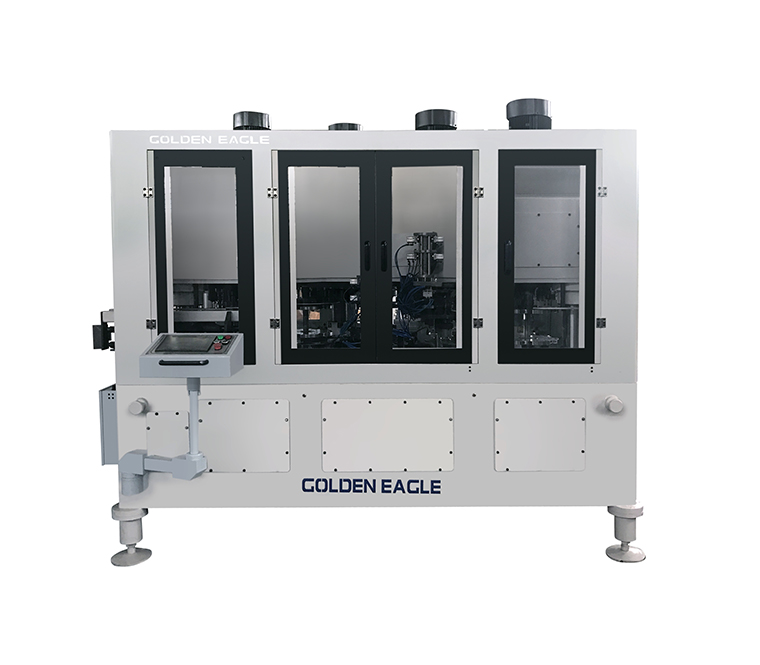Tinplate Can Making Machine
Metal cans are widely used for packing food items such as biscuits, tea, sugar, jam, cheese spreads, dry powders, and baby foods. They are durable and are easy to use, carry, and store. Moreover, they have attractive designs and a beautiful metallic luster.
Various types of tin cans are manufactured to suit the requirements of different food products. They are available in sizes ranging from 250 ml (US cup) to 946 ml (2 US pints / 1 quart). Some of the common tin cans have narrow rims, which resemble a wine bottle or an oyster shell. Some cans are shaped like a rectangle, while others are oval or conical.
The body of a can is made by the process of side seaming. This produces a round hollow structure (cylindrical body) and also reduces the metal usage as compared to interlocking soldering. Several other operations such as necking and flanging for beverage cans and beading and earplug welding for food cans are performed to provide additional strength during storage and retorting of the product inside the can.
Tinplate Can Making Machine
The main materials used in the production of tin cans are tin plate, tin free steel, stainless steel, and aluminium. Typically, the metals are treated to remove impurities before using them in cans. They are then passed through container forming machines to form cans.
For tin cans, the manufacturing process involves several stages including: Tinning, flow melting, chemical passivation, and coating with oily lubricant. These steps ensure the metal packaging material is stable and resists scratching, corrosion, and oxidation. Then, the tin plates are passed through the container forming machine.
In the container forming machine, the tin plates are pushed against each other to form a curved surface that is the top of the can. This curve is sometimes engraved with a label that indicates the contents of the can. The rounded surface of the can is also printed with a logo or other graphic design.
After a can is shaped, the interior of the can must be sealed. A variety of closures are available, ranging from twist-off to press-twist, and deep-press. These closures can be used to protect the product from tampering and pilferage.
In the case of tin plate cans, the internal surfaces are typically plated with tin or zinc to prevent the can from discoloring and rusting. Zinc is an important anti-rusting agent and also increases the shelf life of the can. Other coatings include zinc oxide and aluminum phosphate. A zinc-rich finish can also help to prevent the can from rusting and delamination in the presence of moisture. In addition, an aluminum-rich coating can improve the durability and resistance of the can to corrosive agents.

Necking Flanging Beading Seaming Four station Can Making Machine
| Model |
Function |
Can Diameter
|
Can Height
|
Output Capacity (Cans/min) 20-100cpm |
Total Power
|
|
GT3B21B-T
(8-Head)-Three shrinkage
|
Necking
Necking
Necking and
Flanging
|
Φ52--99mm |
H70- 160mm |
200-500
cpm
|
7.5KW
|
| 305/300Four cans production line |
|
GT351-N-L
(4-Head)
|
Top Necking |
Φ52-99mm |
H80-220mm |
80- 150
cpm
|
7.5KW |
|
GT3B54-NNNF
(4-Head)- On shrinkage
|
Necking
Necking
Necking and
Flanging
|
Φ52- 99mm |
H70-220mm |
80- 150
cpm
|
7.5KW |
|
GT3B51-B-L
(4-Head)
|
Beading |
Φ52-99mm |
H70-220mm |
80- 150
cpm
|
4KW |
|
GT3B51-S-C
(6-Head)
|
Top Seaming |
Φ52- 99mm |
H60-220mm |
80- 150
cpm
|
4KW |










